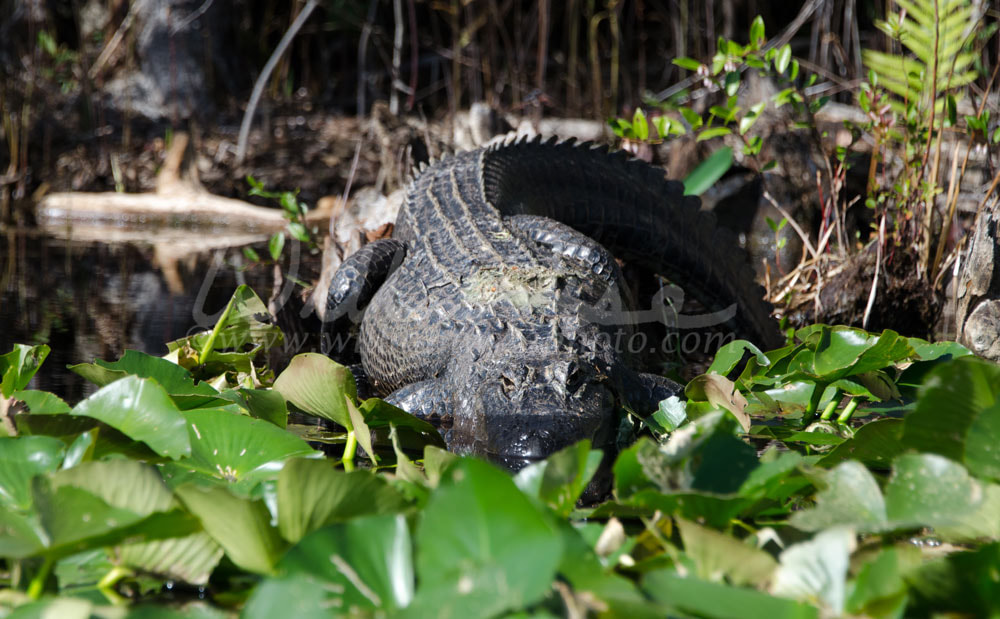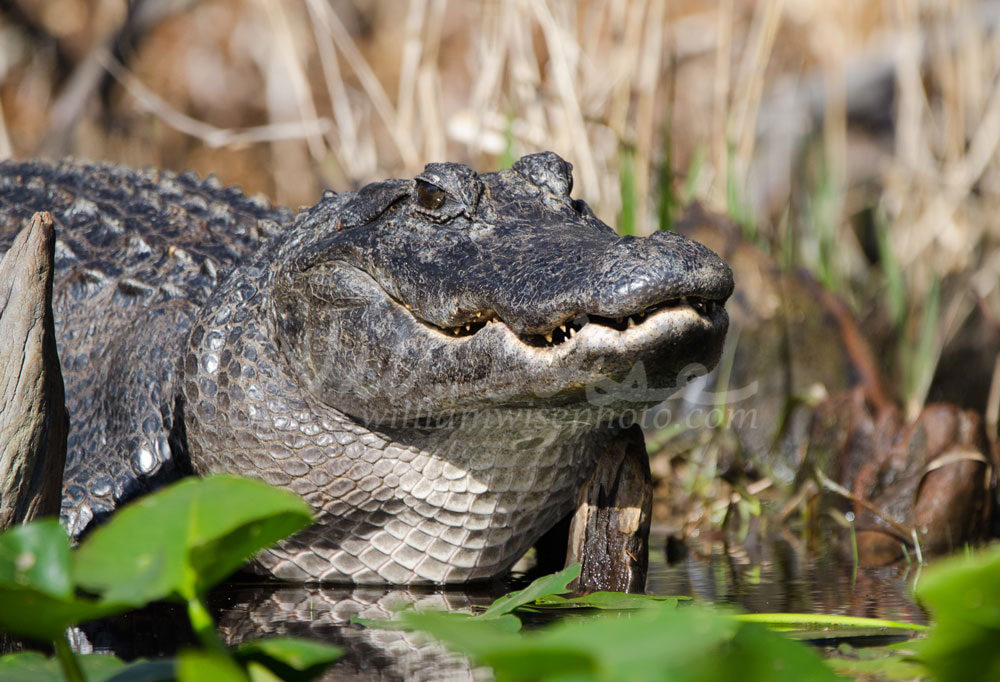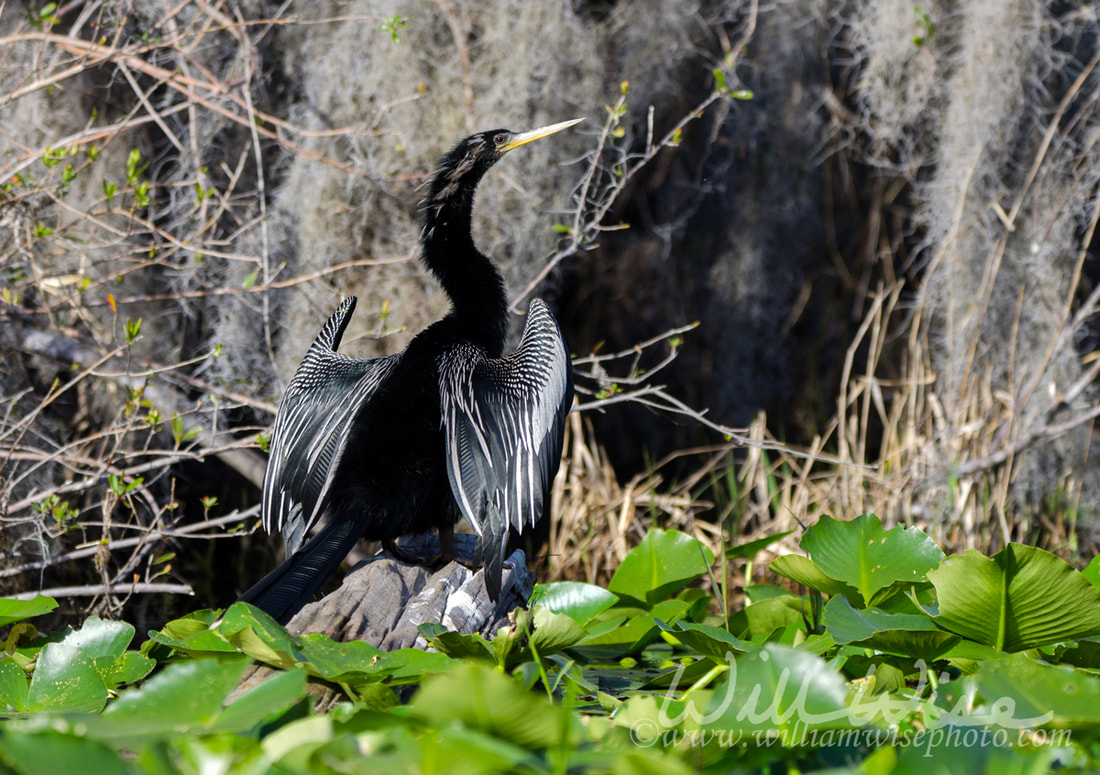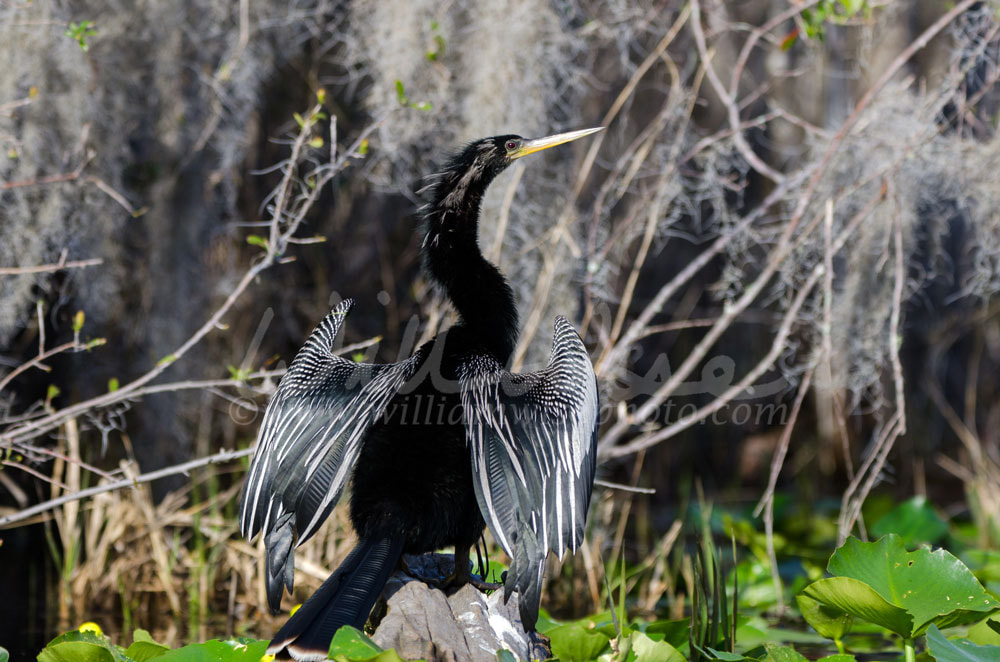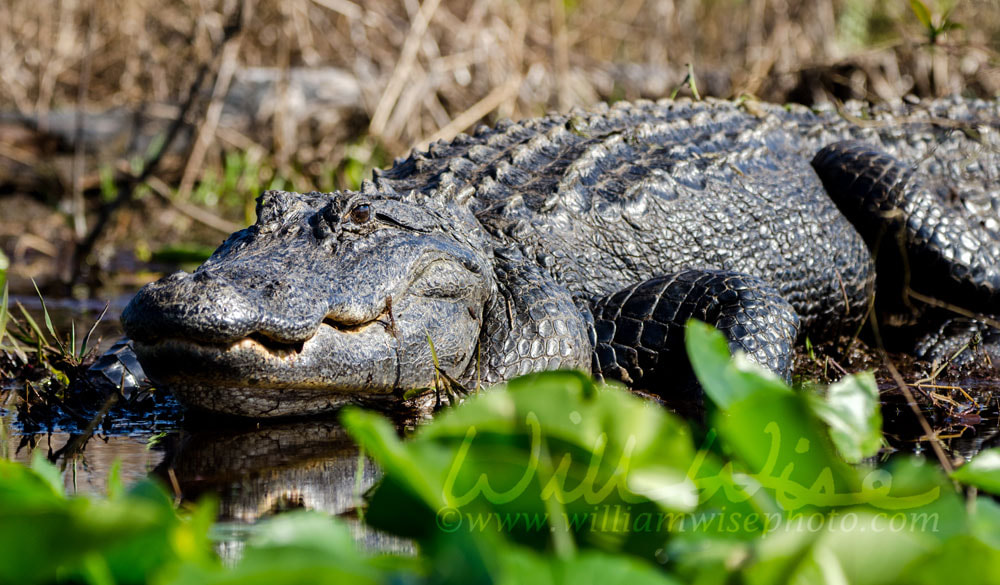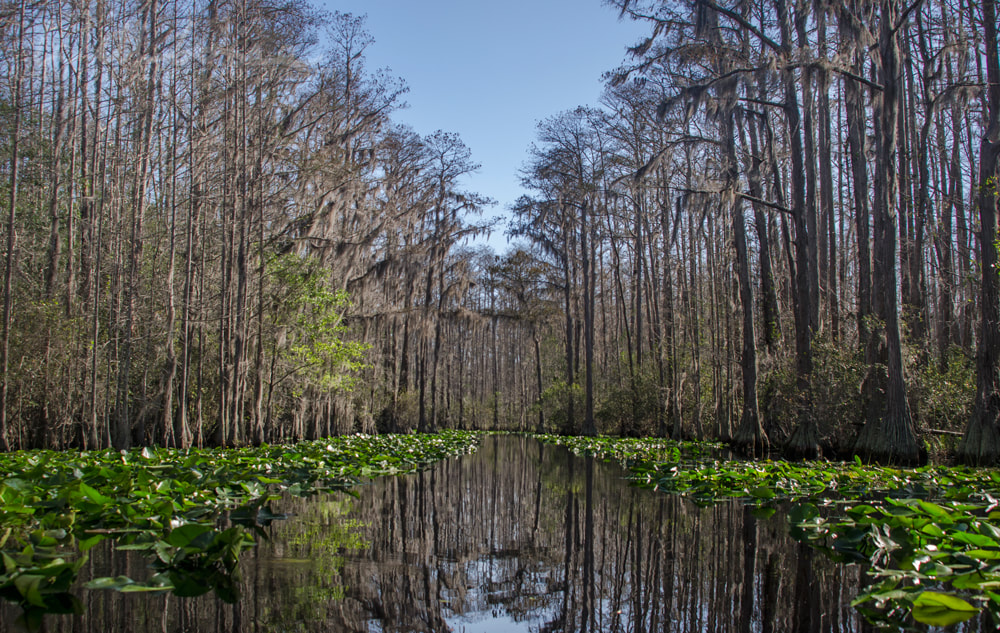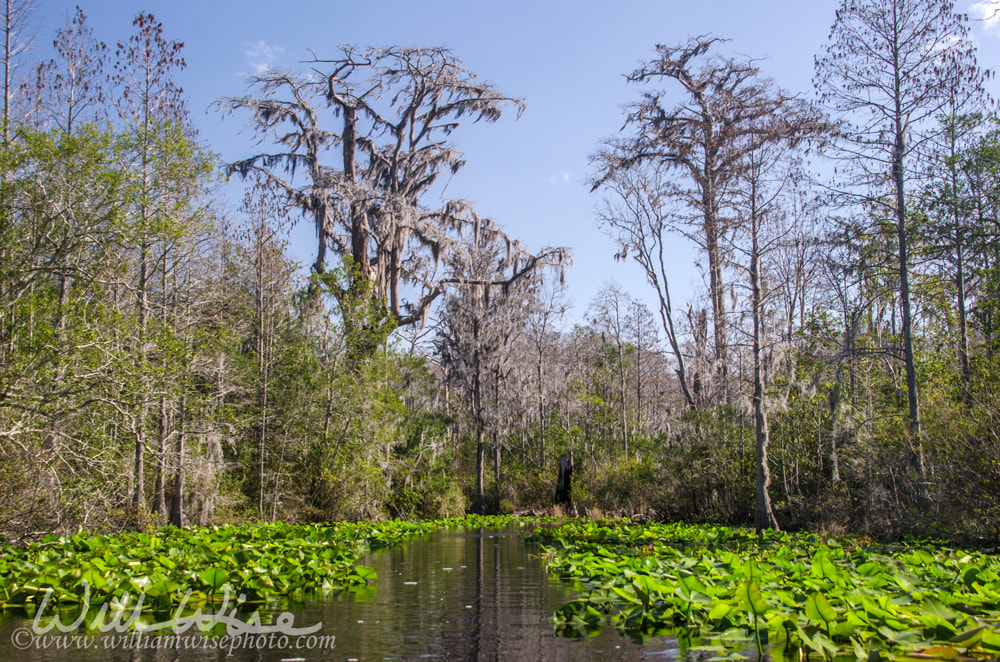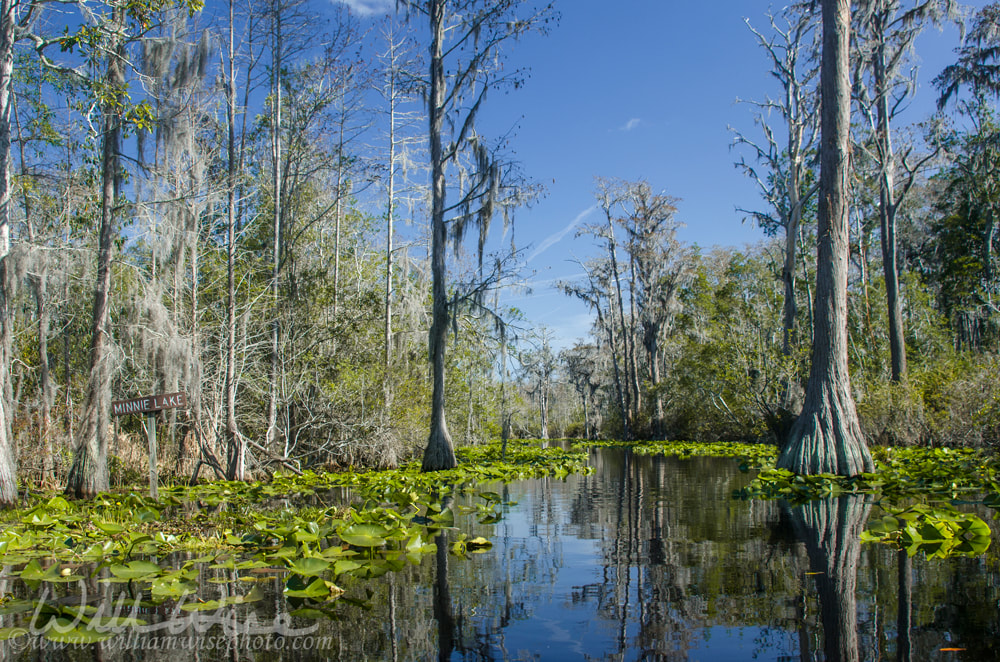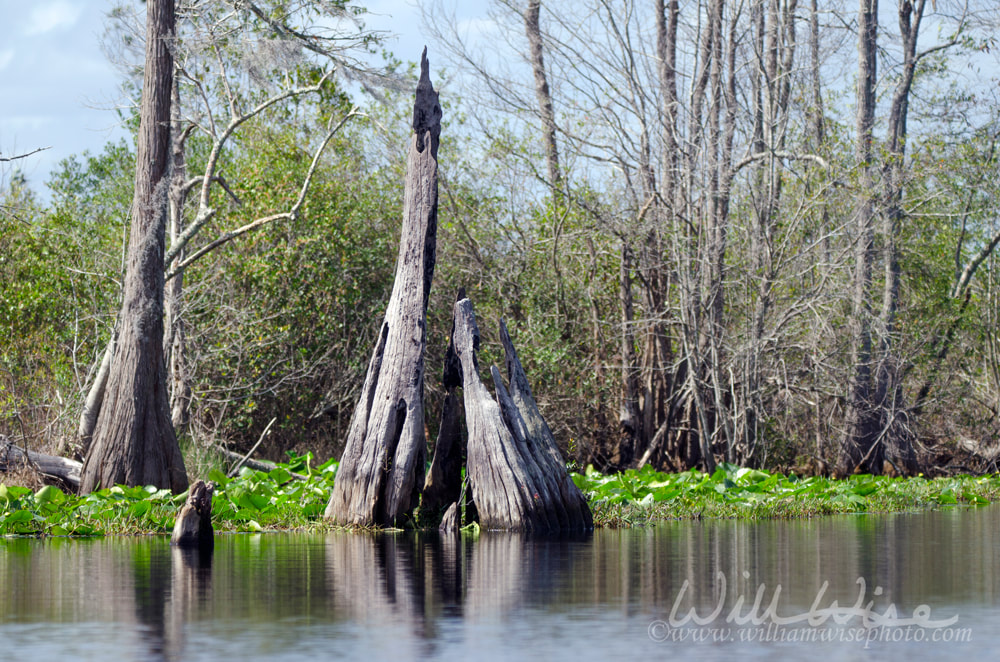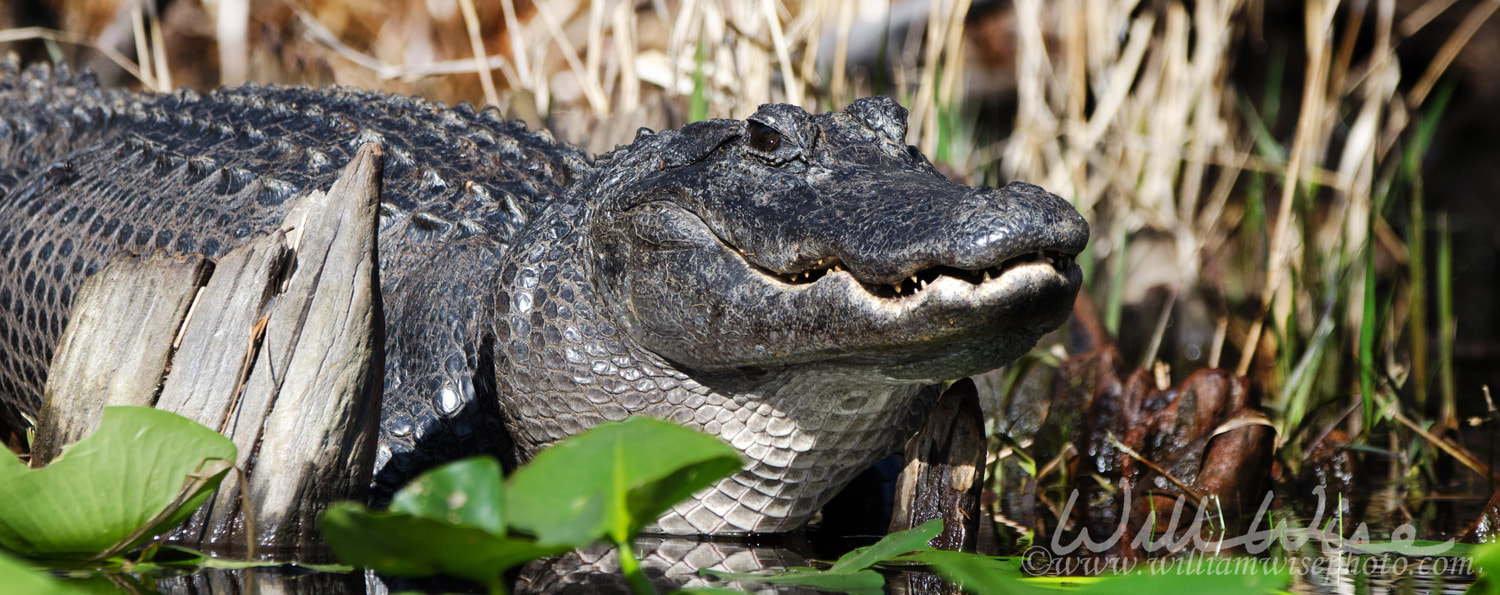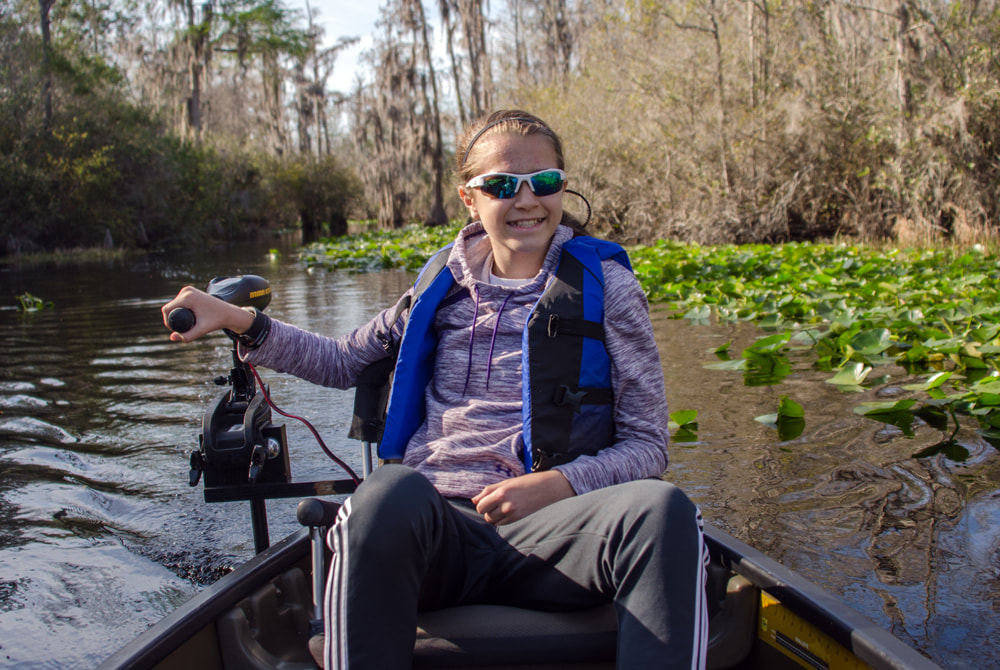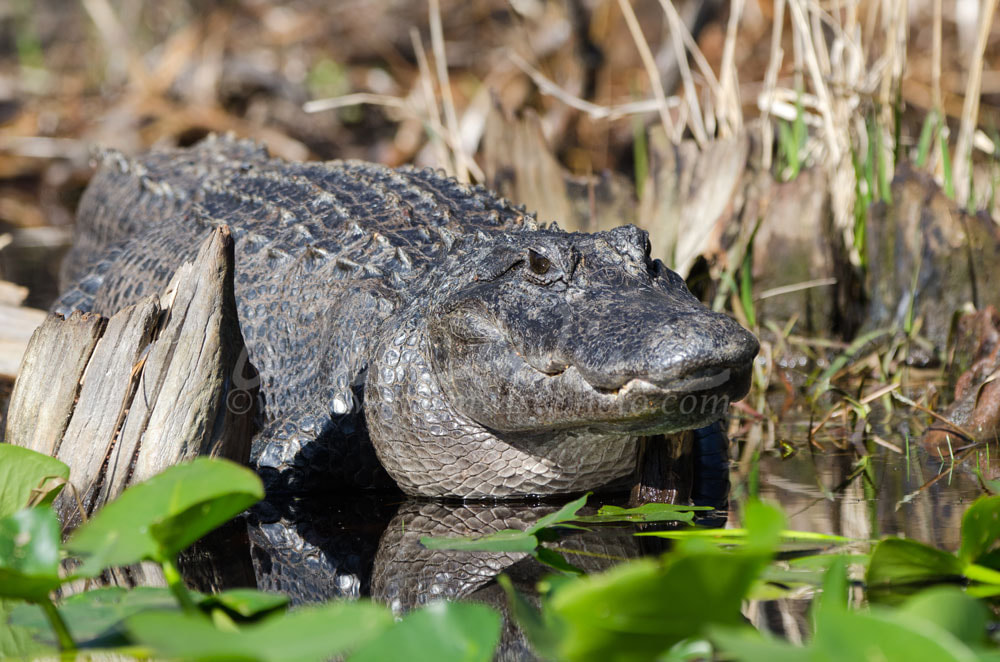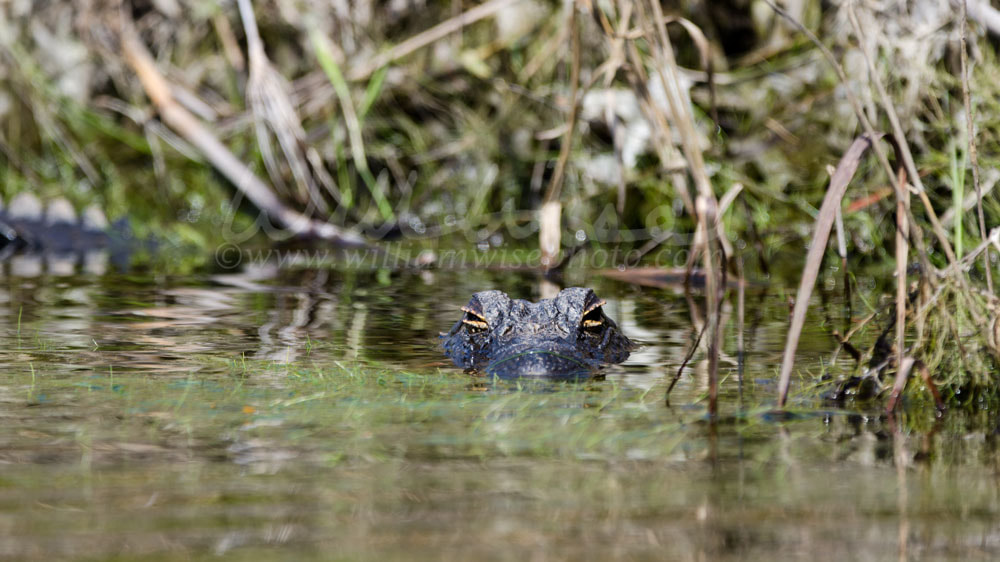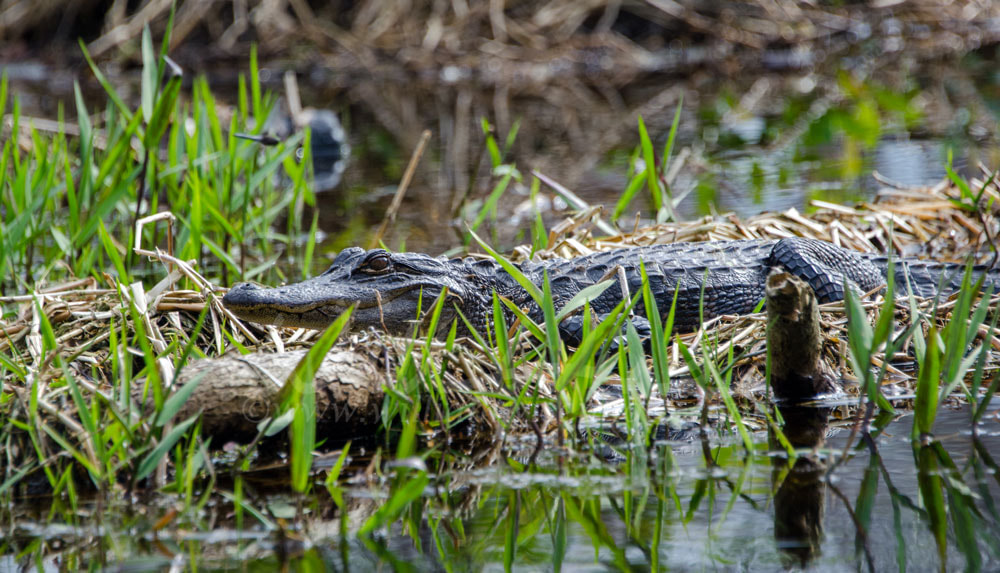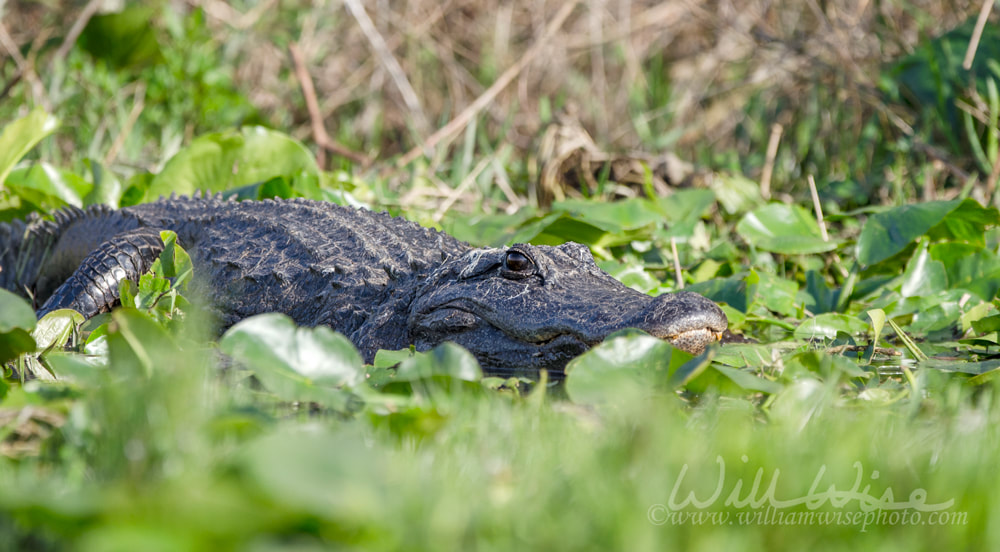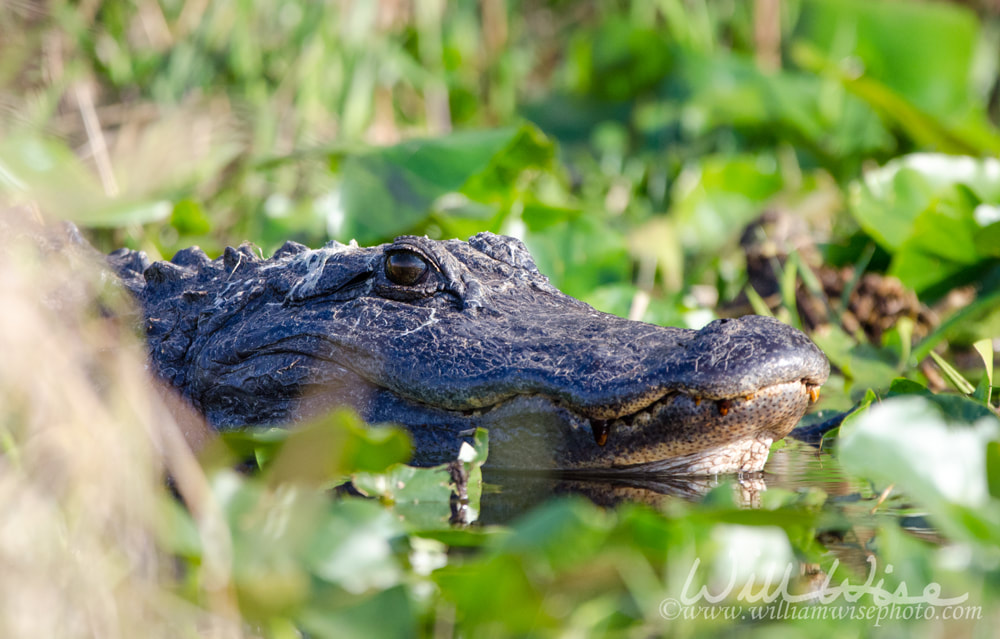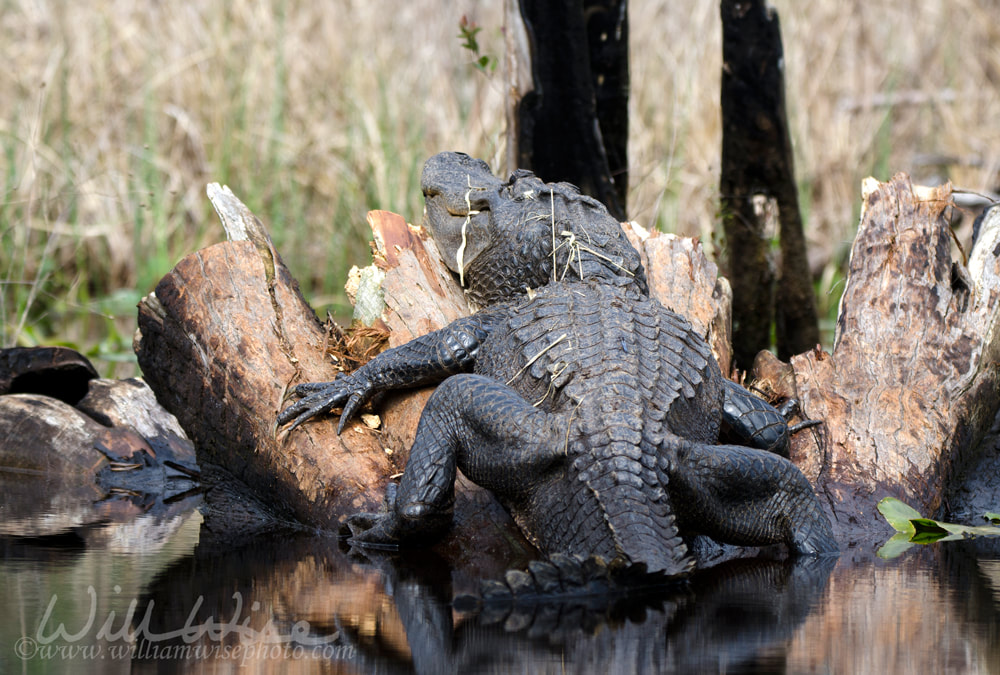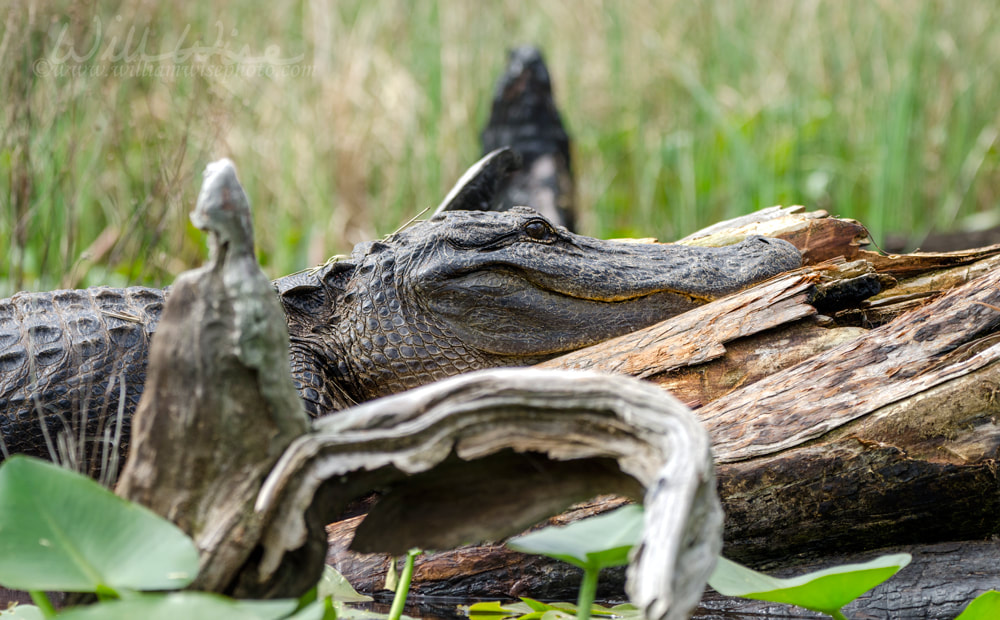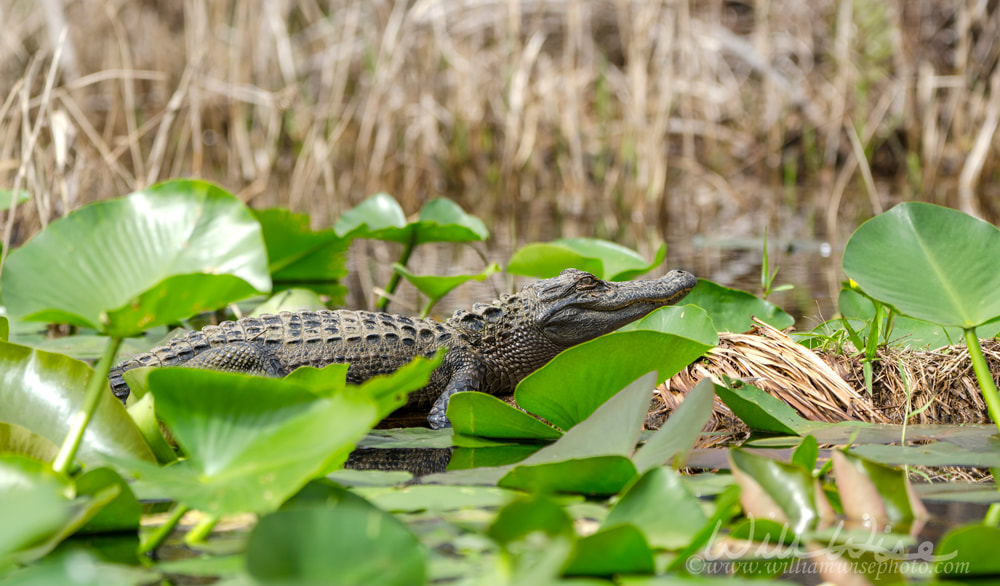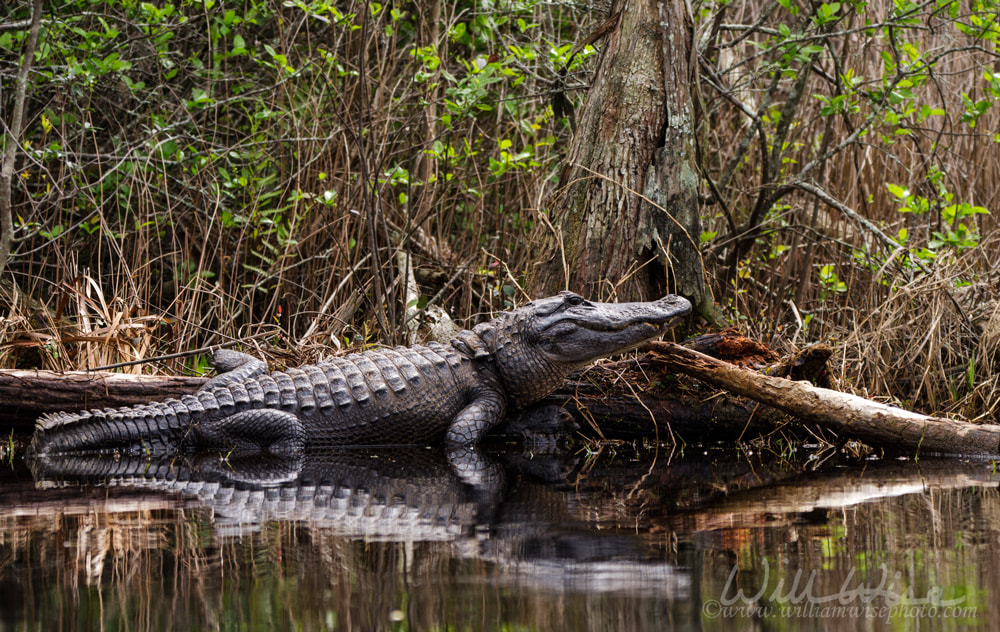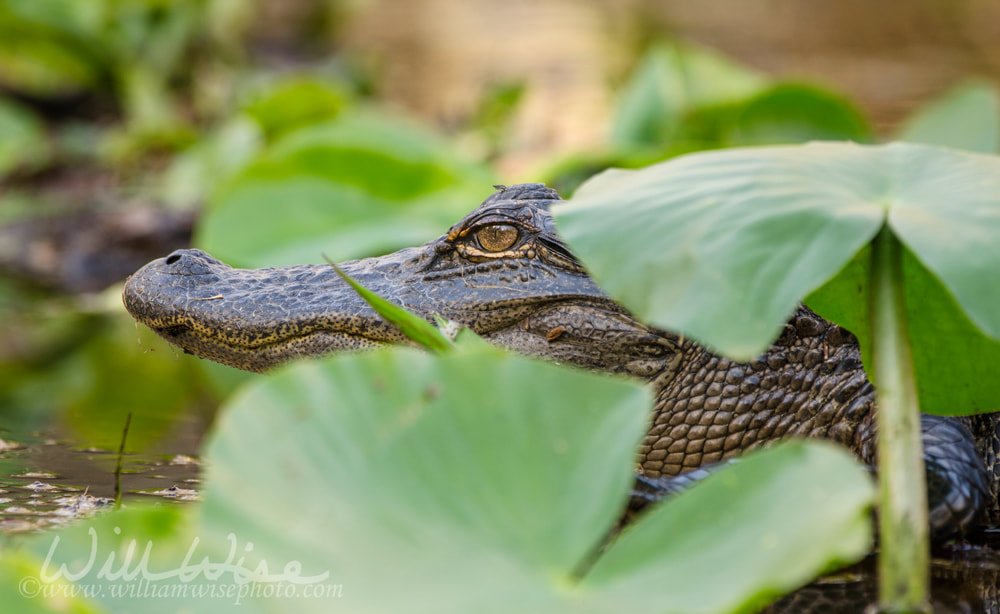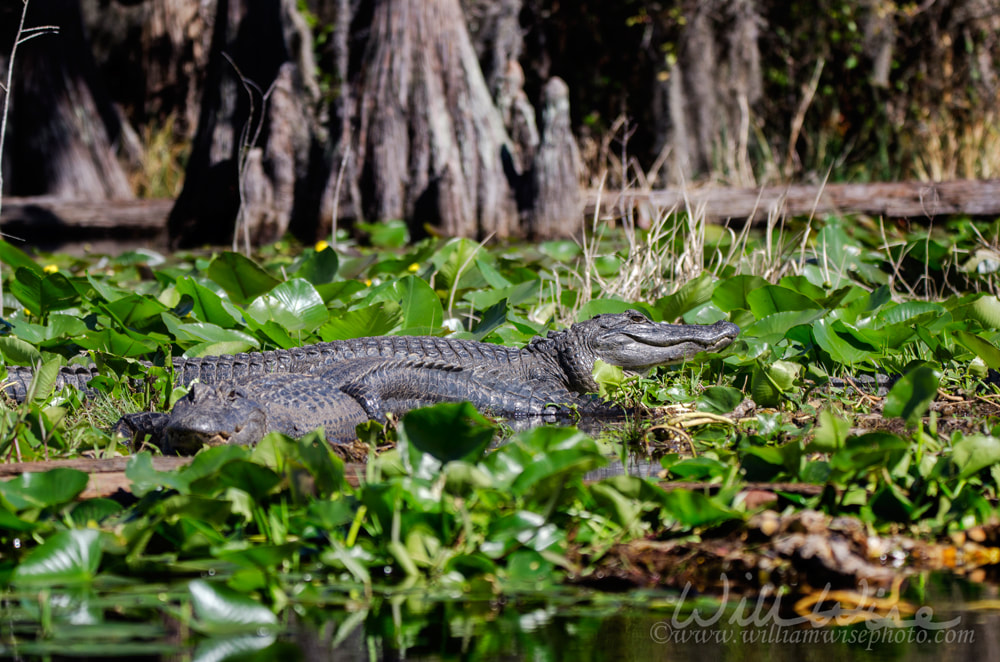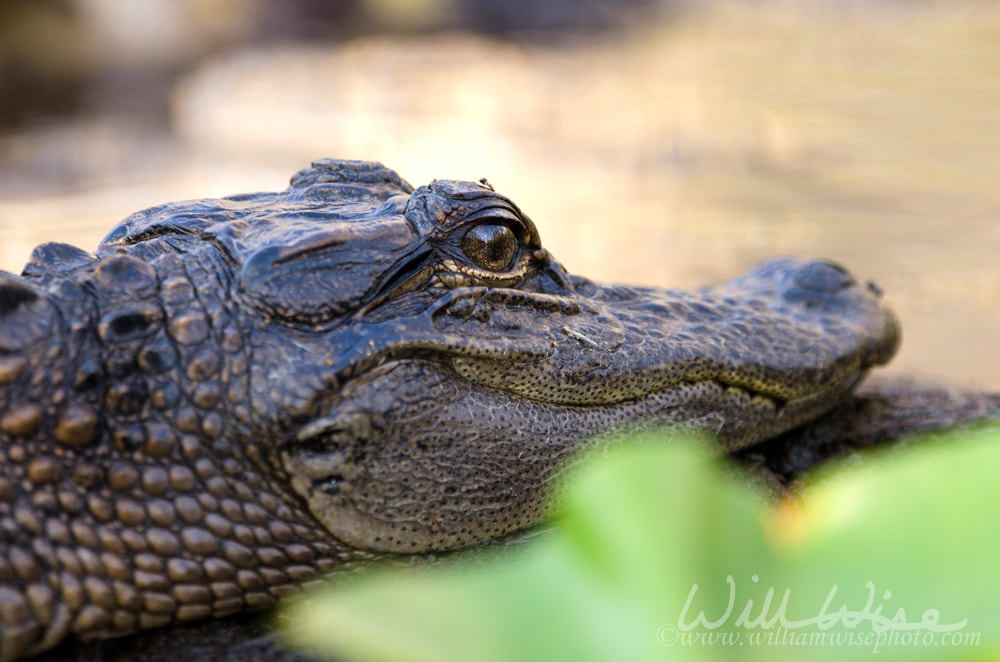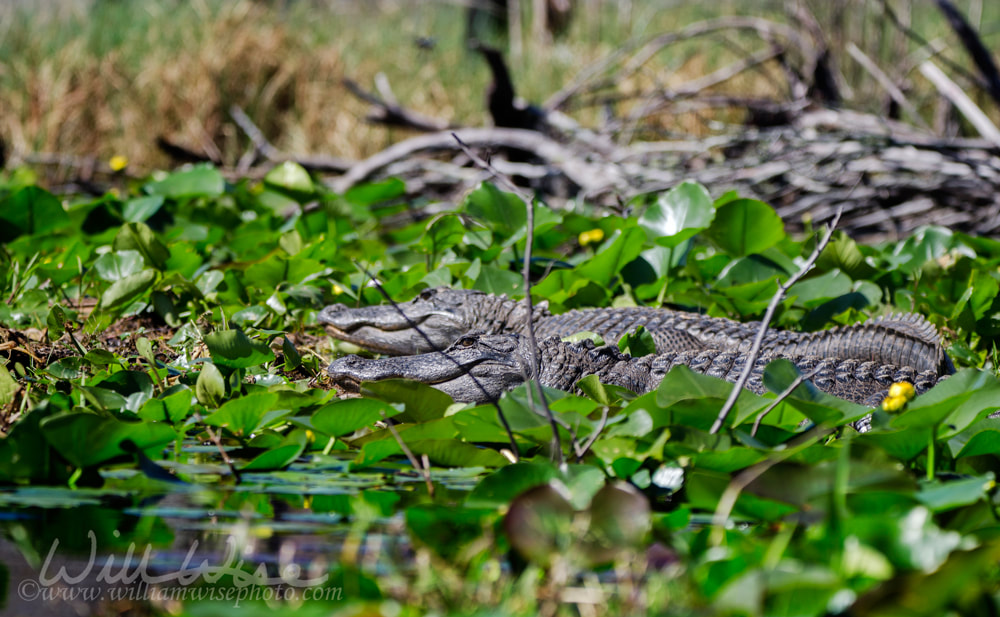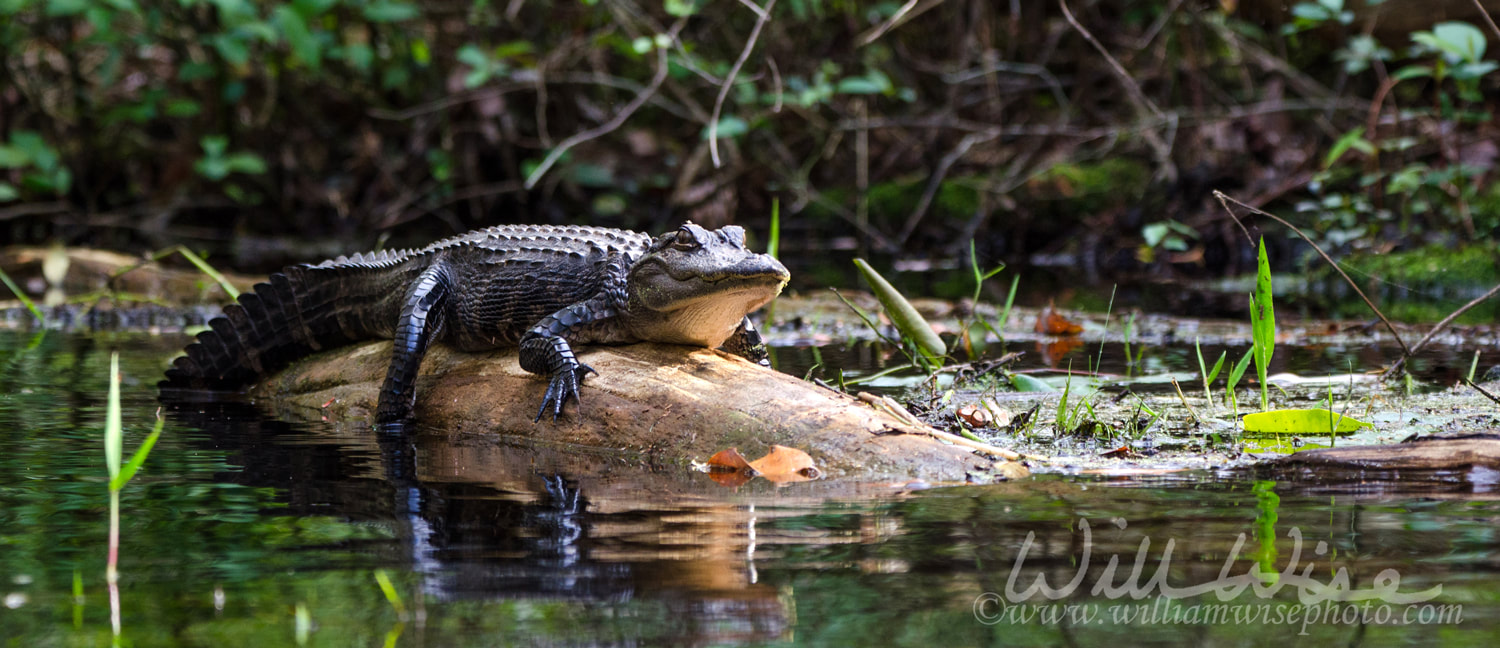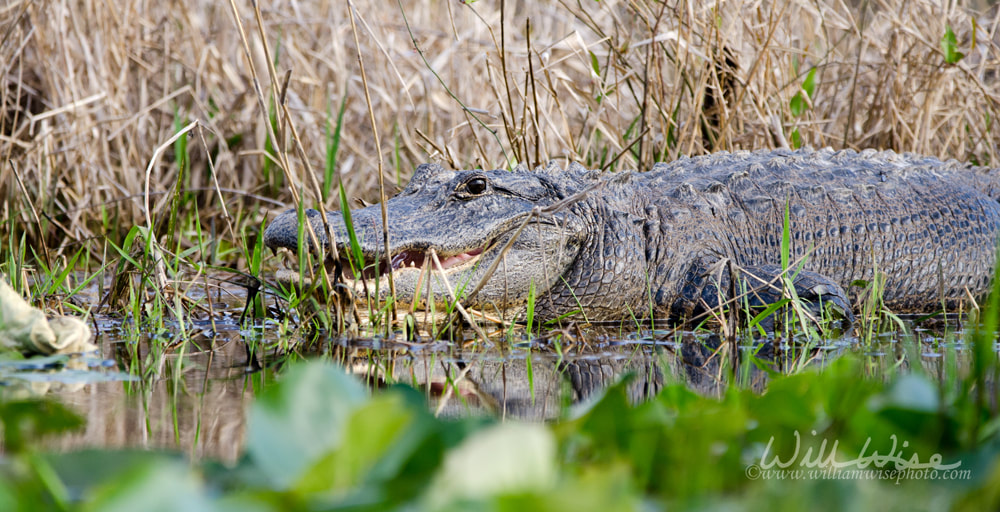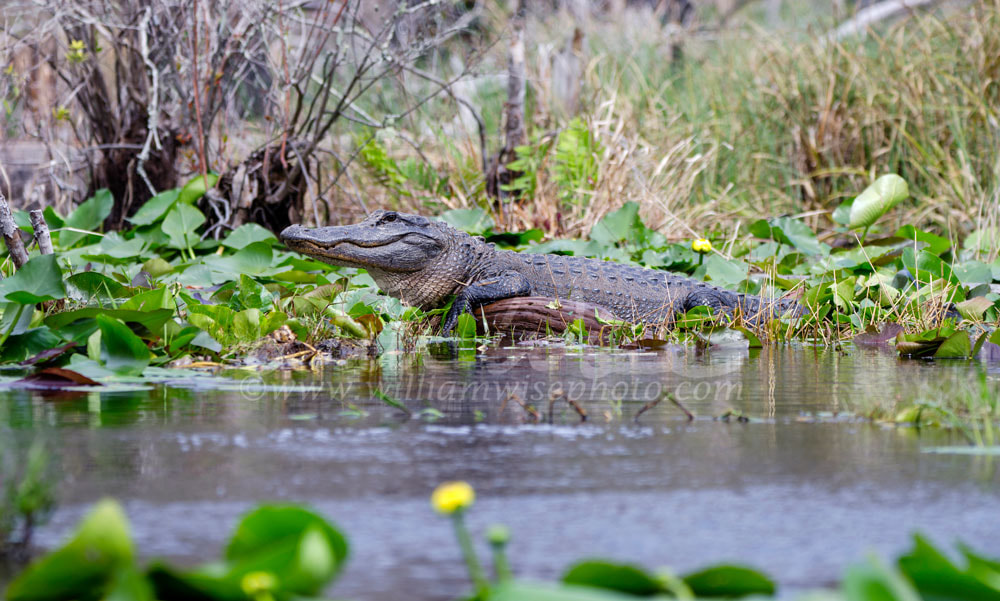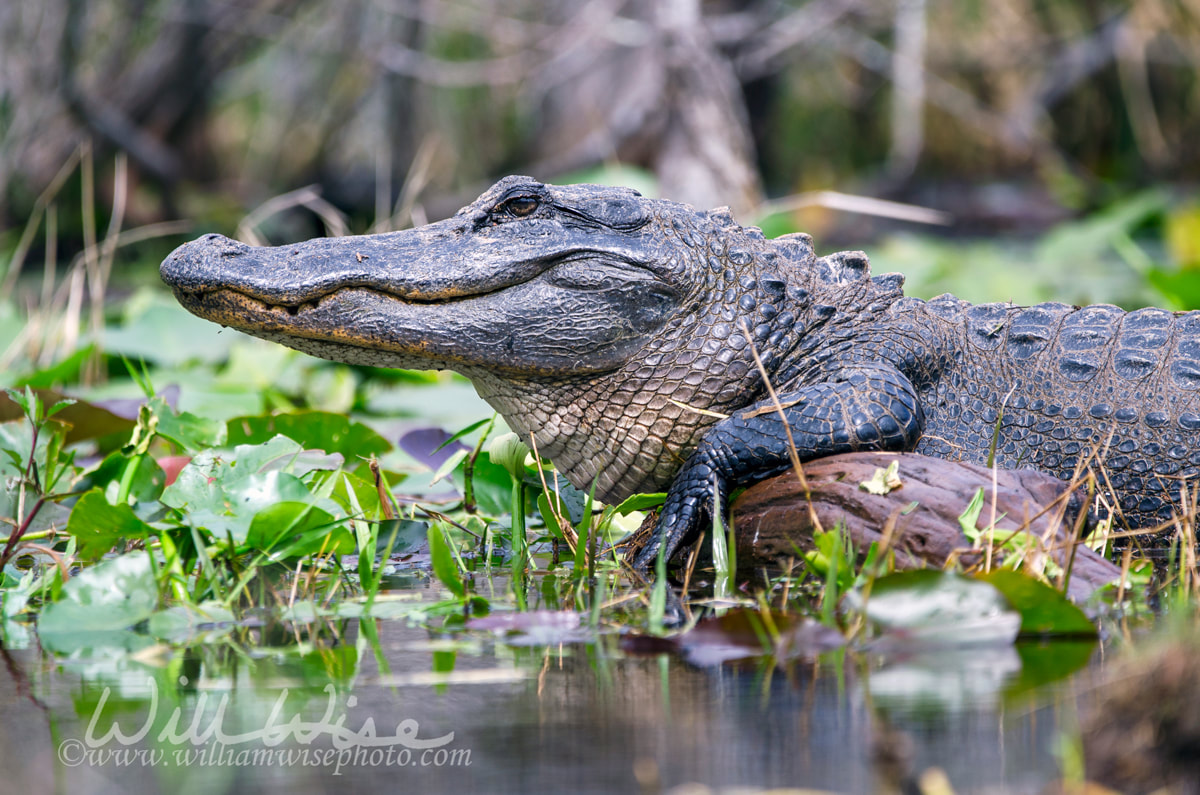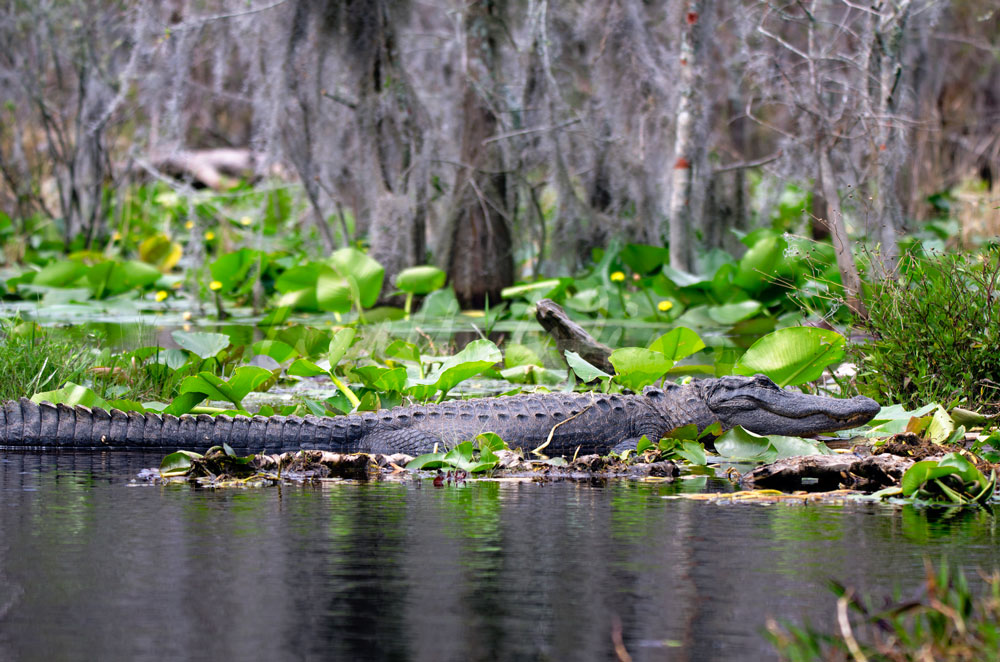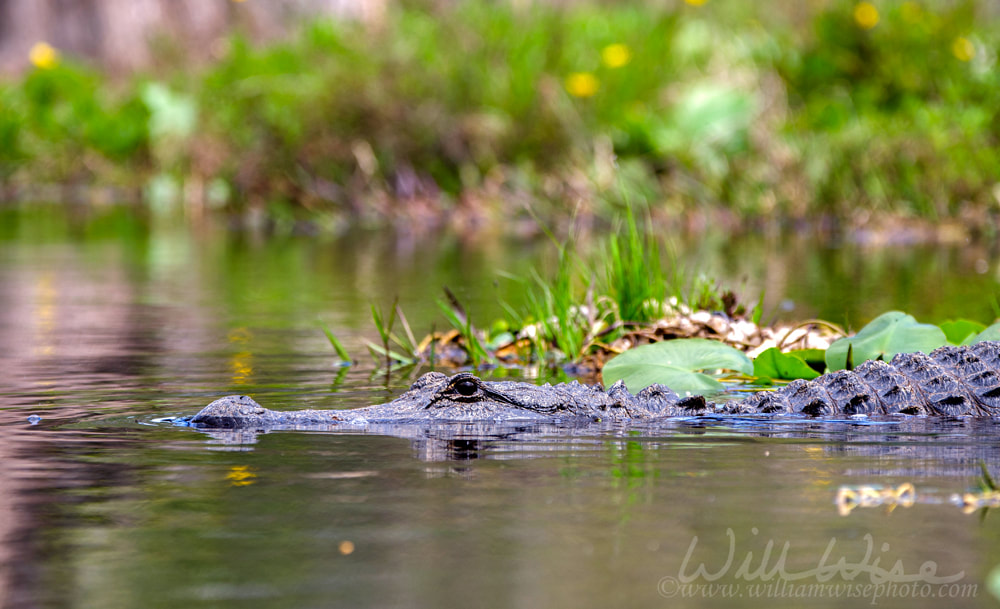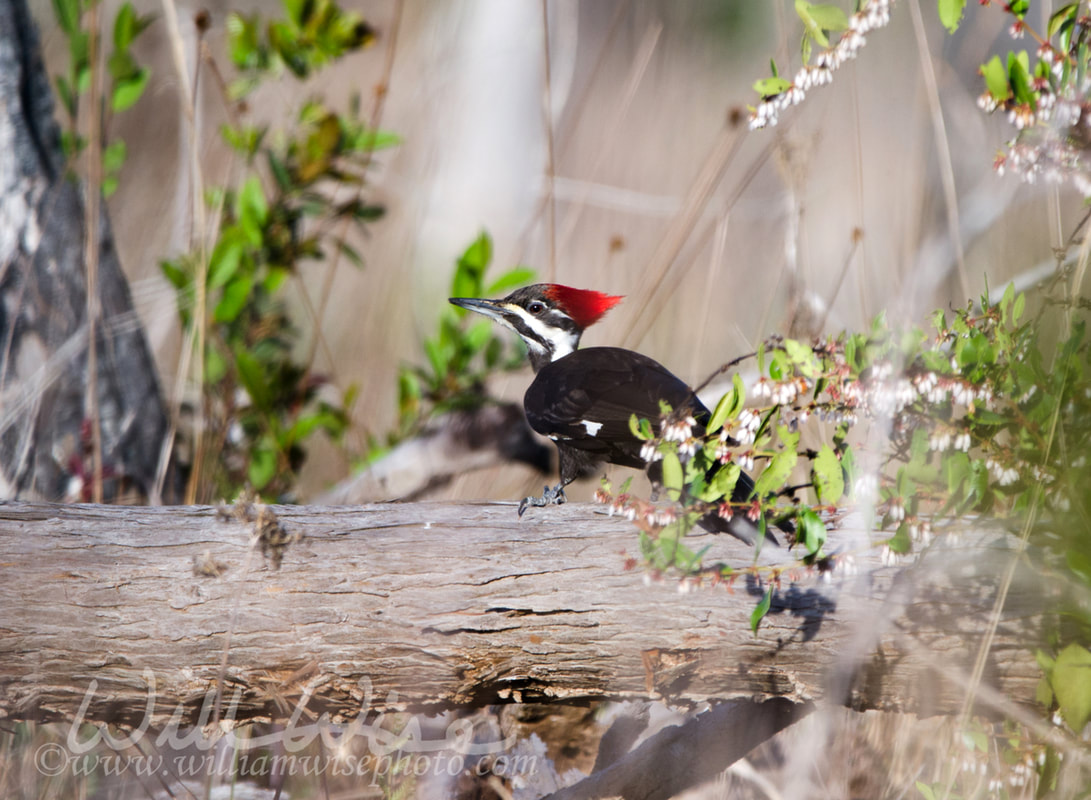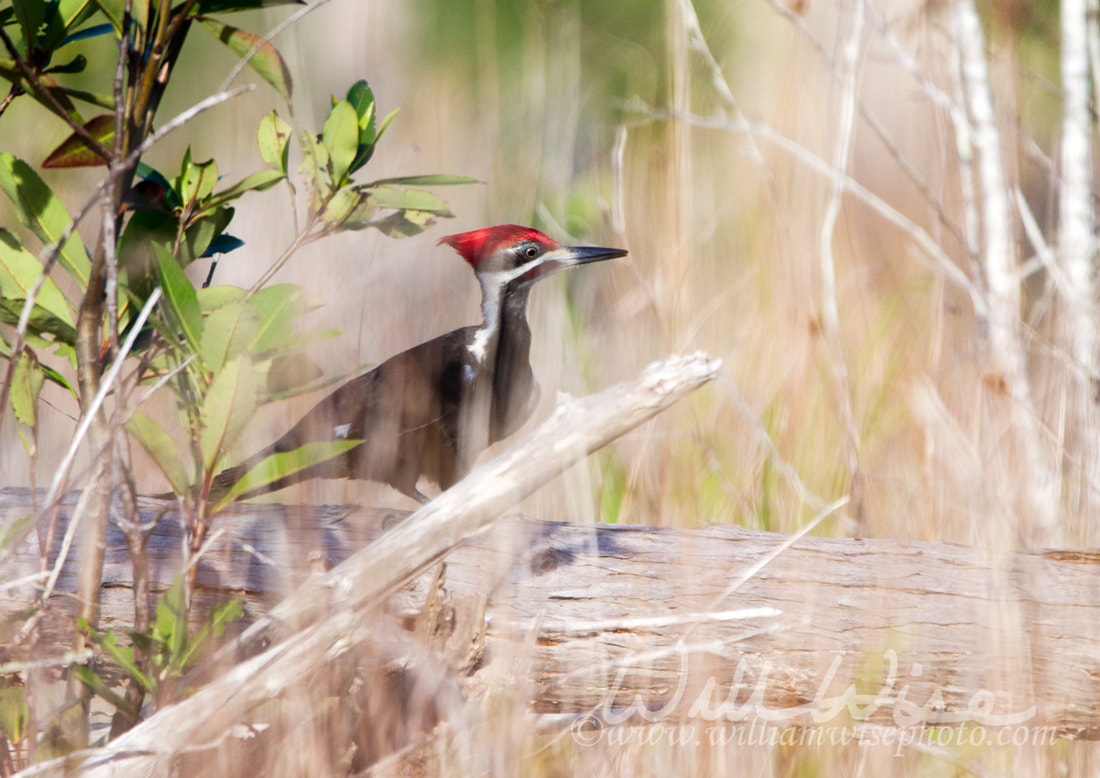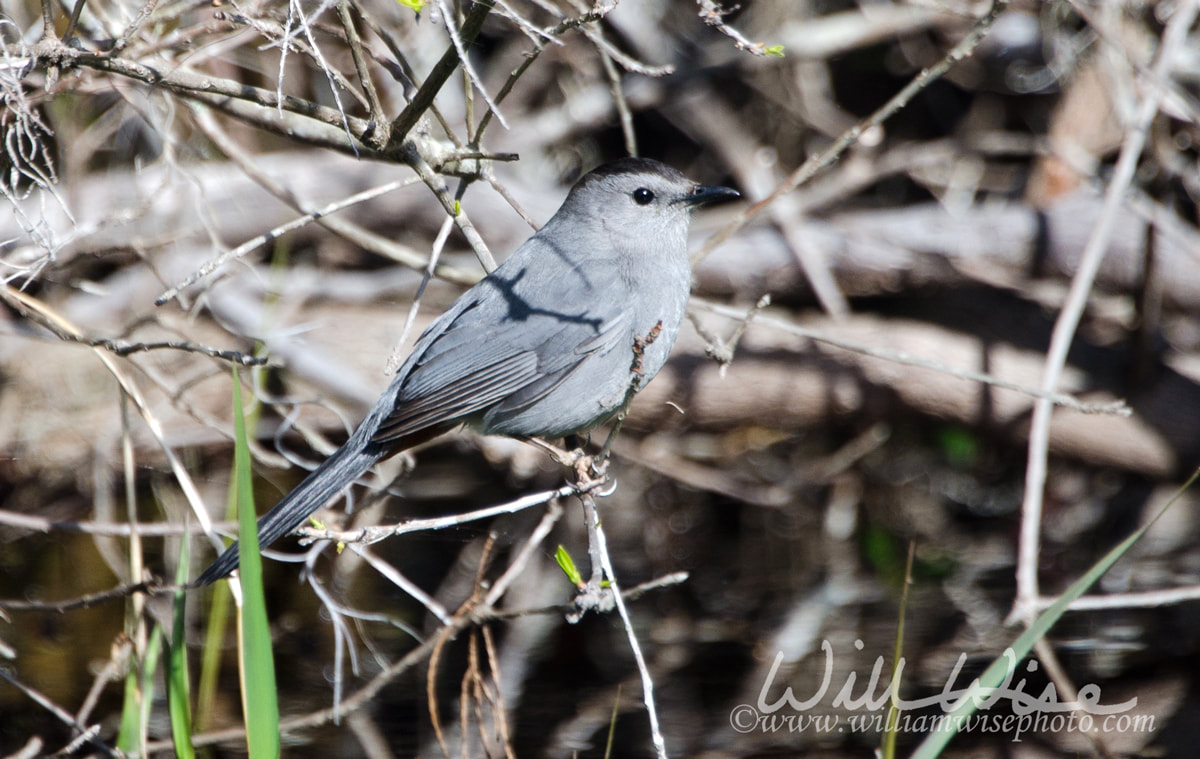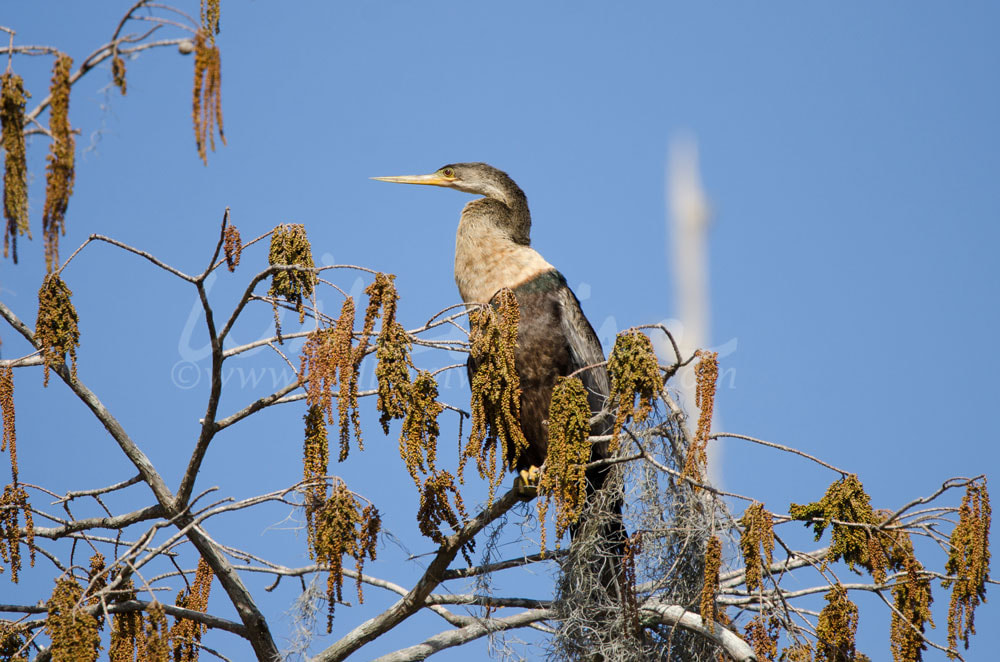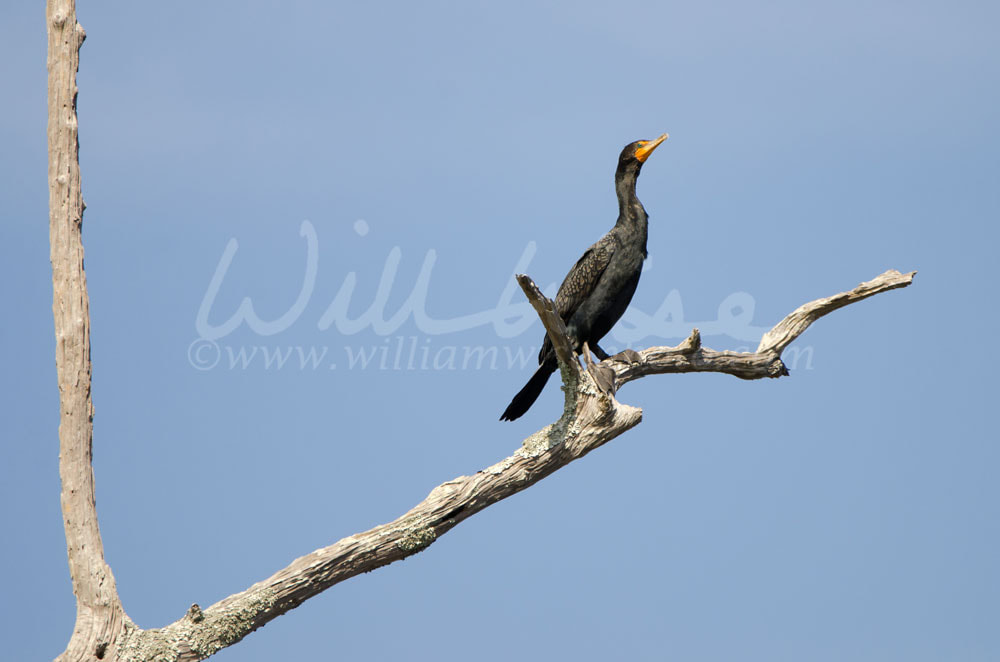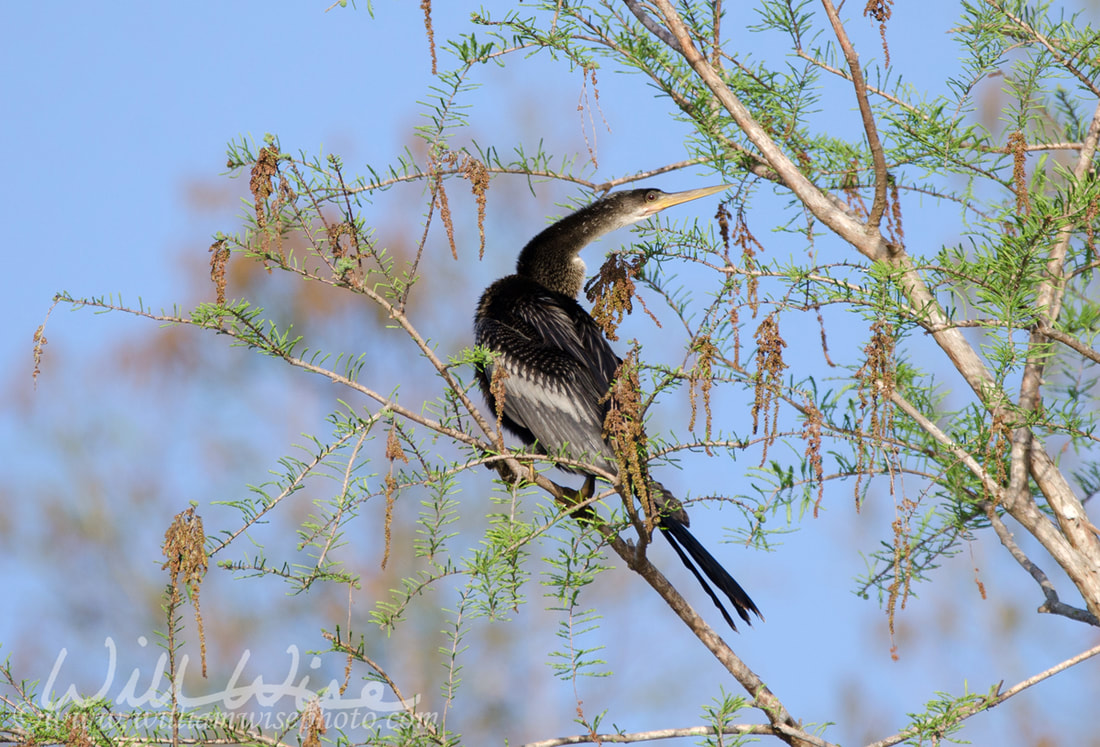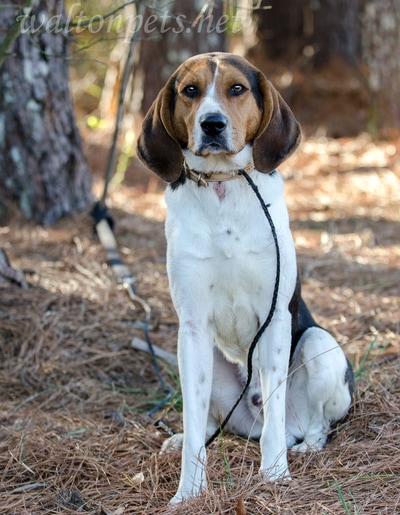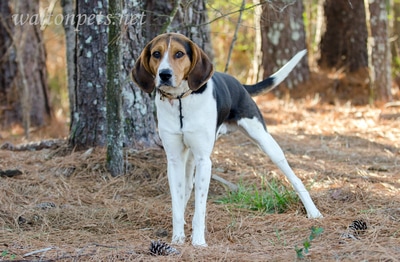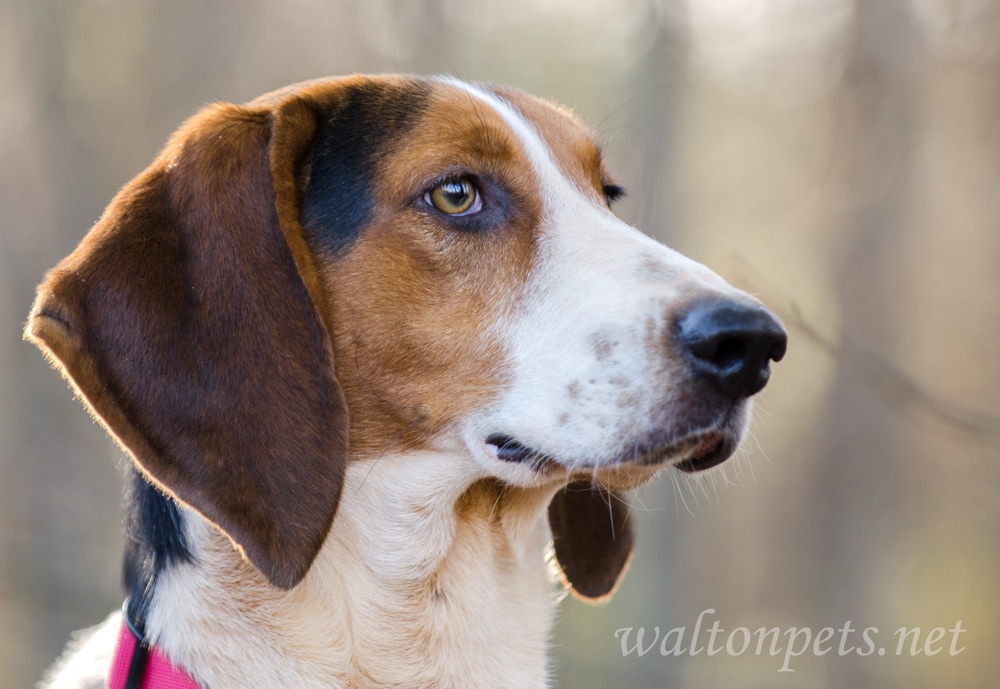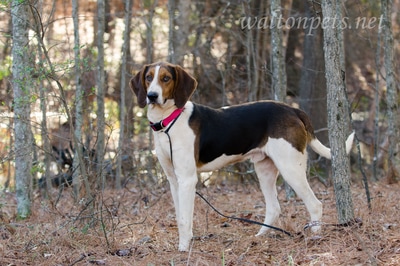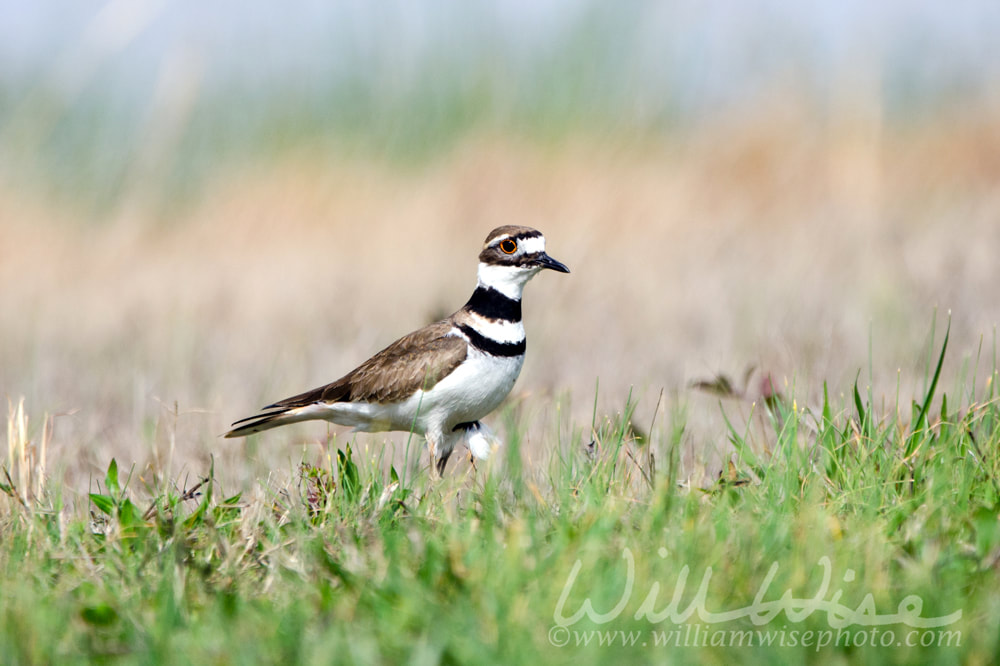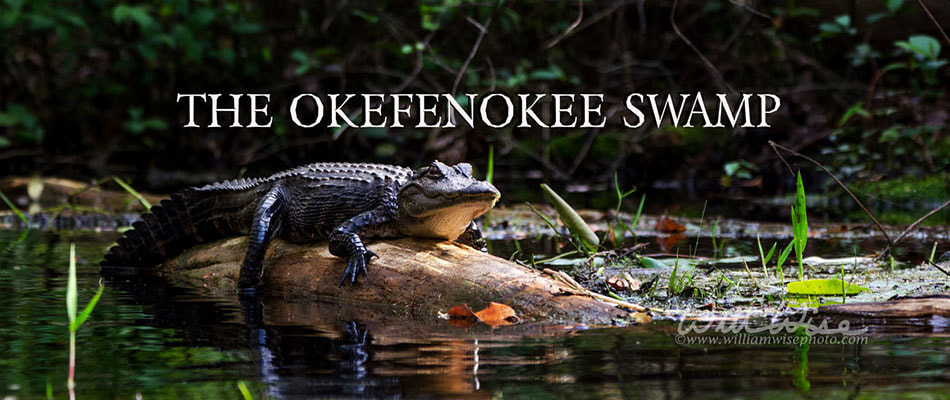 Okefenokee Photography by William Wise. A nature photo journal exploration of Georgia's Okefenokee Swamp, the Land of Trembling Earth, one of the largest blackwater swamps in North America. The alligators, birds, snakes and wildlife of Okefenokee National Wildlife Refuge. -- "What a wildly wonderful world, God! You made it all, with Wisdom at Your side, made earth overflow with your wonderful creations." Psalms 104 The Message In the early years of our nation, the Okefenokee Swamp was thought to be an uninhabitable wilderness never to be settled, or even explored, because of its many dangers. While the bear, panther and wolf had been extirpated from the “civilized places”, they were thought to remain within the dark interior of the Okefenokee. The giant crocodilian, the American Alligator, still patrolled the waters while venomous snakes hid among the cypress stumps. The image of horror was further bolstered by stories of outlaw fugitives, scalp-hunting Seminoles, and spooks and haunts.
Times have changed and science has dispelled fiction. But the mystery and trepidation still remains. With the exodus of the Swampers, the Okefenokee now remains uninhabited. The Swamp is still the abode of snakes, bobcat, bird and bear. And the formidable crocodilian, the American Alligator, still patrols the waters in great abundance. And but for the adventurous kayakers that cross the refuge’s maintained canoe trails, the Okefenokee is the refuge of beast and bird alone.
0 Comments
 Okefenokee Photography by William Wise. A nature photo journal exploration of Georgia's Okefenokee Swamp, the Land of Trembling Earth, one of the largest blackwater swamps in North America. The alligators, birds, snakes and wildlife of Okefenokee National Wildlife Refuge and Stephen C Foster State Park. ©www.williamwisephoto.com My daughter and I are back in the Okefenokee for four days of paddling! The timing didn’t quite work out for us to make a return trip to the Okefenokee in 2016, but the postponement was quite beneficial as we were able to better equip the expedition. Since the last trip, we bought our own canoe, which meant no fees and no required return times as with the State Park rental canoe. We had also purchased a trolling motor allowing us to cover more area and explore deeper than before. The Saturday prior to leaving for the Okefenokee, we took the canoe and trolling motor to Lake Rutledge at Hard Labor Creek State Park for a trial run. Amanda quickly became proficient with navigating from the rear while I sat in the bow with a ready camera. I built a small camera shelf to mount to the front of the canoe for shooting. And the most exciting piece of new equipment was for my camera. On the Monday prior to leaving, I opened a box shipped from BH Photo containing a Sigma 150-600mm super-telephoto lens! Much longer than my 300mm than I'd been using up to now. A year’s delay also meant more time for planning. By chance, I came across a Falcon Guide, Paddling Okefenokee NWR, for twenty-five cents at a thrift store. I had plenty of time to read and re-read the small book. I also pulled out a Georgia Wildlife Federation book on the swamp I had purchased many years ago. In the weeks leading up to our planned March journey, I called the National Park Service hotline several times for details about canoe trails and overnight permits. I had desired to spend at least one night camped in the swamp, either at the Big Water shelter, Cravens Hammock, or Floyd’s Island, but because of low water levels, none of these options were open. The only overnight shelter open was the platform on Minnie’s Lake, normally a day-use only platform. Since that was only 5 miles from Stephen C Foster State Park, we decided to camp all three nights in the campground and make out-and-back trips each day. I spent a few hours tediously entering GPS coordinates for islands, trail junctions, platforms and other landmarks. By the end of our trip, I maxed out five SD cards with over 5,800 photos. My initial cull of blurred or flawed photos brought it down to about 1,600 photos.
 Okefenokee Photography by William Wise. A nature photo journal exploration of Georgia's Okefenokee Swamp, the Land of Trembling Earth, one of the largest blackwater swamps in North America. The alligators, birds, snakes and wildlife of Okefenokee National Wildlife Refuge and Stephen C Foster State Park. -- "What a wildly wonderful world, God! You made it all, with Wisdom at Your side, made earth overflow with your wonderful creations." Psalms 104 The Message An excerpt from naturalist Bradford Torrey's 1895 book, A Florida Sketch-Book:
Torrey, Bradford. "Chapter 6: “On the Upper St. John’s”." A Florida Sketch-Book. 1895.  Okefenokee Photography by William Wise. A nature photo journal exploration of Georgia's Okefenokee Swamp, the Land of Trembling Earth, one of the largest blackwater swamps in North America. The alligators, birds, snakes and wildlife of Okefenokee National Wildlife Refuge and Stephen C Foster State Park. -- "What a wildly wonderful world, God! You made it all, with Wisdom at Your side, made earth overflow with your wonderful creations." Psalms 104 The Message During his travels through Flordida in 1894, naturalist Bradford Torrey described the beautiful Anhinga in his book A Florida Sketch-book:
 Okefenokee Photography by William Wise. A nature photo journal exploration of Georgia's Okefenokee Swamp, the Land of Trembling Earth, one of the largest blackwater swamps in North America. The alligators, birds, snakes and wildlife of Okefenokee National Wildlife Refuge and Stephen C Foster State Park. -- "What a wildly wonderful world, God! You made it all, with Wisdom at Your side, made earth overflow with your wonderful creations." Psalms 104 The Message A passage from William Bartram's Travels, published in 1791.
William Bartram was a botantist, artist, and nature writer that explored the southeastern United States around the time of the American Revolution (1773-1776). He was a scientist, creationist and Christian that gave glory to the Author for all the wonderful works he observed and documented in his book, Travels Through North and South Carolina, Georgia, East and West Florida.  Okefenokee Photography by William Wise. A nature photo journal exploration of Georgia's Okefenokee Swamp, the Land of Trembling Earth, one of the largest blackwater swamps in North America. The alligators, birds, snakes and wildlife of Okefenokee National Wildlife Refuge and Stephen C Foster State Park. -- "What a wildly wonderful world, God! You made it all, with Wisdom at Your side, made earth overflow with your wonderful creations." Psalms 104 The Message  Okefenokee Photography by William Wise. A nature photo journal exploration of Georgia's Okefenokee Swamp, the Land of Trembling Earth, one of the largest blackwater swamps in North America. The alligators, birds, snakes and wildlife of Okefenokee National Wildlife Refuge and Stephen C Foster State Park. -- "What a wildly wonderful world, God! You made it all, with Wisdom at Your side, made earth overflow with your wonderful creations." Psalms 104 The Message For our 2017 trip I added an electric trolling motor to our canoe, my daughter acting as captain of our vessel. Not only did the motor mean relaxed travels with little rowing, but it allowed hands-free for photography. In addition, our patrols of the shores of Billy’s Lake to spot the large alligators basking were much quicker. Within minutes of hitting the swamp on our 2017 trip, by covering ground so quickly, we found one gloriously large bull gator poised for a photograph on Billy's Lake, unmoved by our close approach. His portrait became one of my favorites of the 2017 trip. What luck to grab a great shot so quickly!
 Okefenokee Photography by William Wise. A nature photo journal exploration of Georgia's Okefenokee Swamp, the Land of Trembling Earth, one of the largest blackwater swamps in North America. The alligators, birds, snakes and wildlife of Okefenokee National Wildlife Refuge and Stephen C Foster State Park. -- "What a wildly wonderful world, God! You made it all, with Wisdom at Your side, made earth overflow with your wonderful creations." Psalms 104 The Message On our four day paddling trek in the Okefenokee Swamp National Wildlife Refuge, the gator were so numerous and photographs so plenteous that they could hardly all fit on my main Okefenokee Journal page.  Okefenokee Photography by William Wise. A nature photo journal exploration of Georgia's Okefenokee Swamp, the Land of Trembling Earth, one of the largest blackwater swamps in North America. The alligators, birds, snakes and wildlife of Okefenokee National Wildlife Refuge and Stephen C Foster State Park. -- "What a wildly wonderful world, God! You made it all, with Wisdom at Your side, made earth overflow with your wonderful creations." Psalms 104 The Message Billy's Lake - Around 5:00 pm, after getting shots of a beautiful, white, Great Egret, we pulled the canoe onto some spatterdock to observe two Pileated Woodpeckers on the bank. All of the Pileateds I had previously seen stayed fairly high up in the trees. But these two were foraging along the ground; hopping on the many downed trees, ripping and prying apart rotten bark and wood. It was a treat to watch these two large Woodpeckers for about ten minutes.
 Okefenokee Photography by William Wise. A nature photo journal exploration of Georgia's Okefenokee Swamp, the Land of Trembling Earth, one of the largest blackwater swamps in North America. The alligators, birds, snakes and wildlife of Okefenokee National Wildlife Refuge. -- "What a wildly wonderful world, God! You made it all, with Wisdom at Your side, made earth overflow with your wonderful creations." Psalms 104 The Message One of the most common sounds to break the silence of the Okefenokee Swamp is that of the Gray Catbird. This nasally “meow” is how it gained its name. All About Birds describes it as “a raspy mew that sounds like a cat.” If you listen to an audio clip before heading into the bush, you’ll soon realize that you are surrounded by unseen catbirds by their persistent calling from the tangles and scrub of the Okefenokee.
When you do finally spot one, you’ll notice an all gray bird with a black cap. Less frequently seen is the rich burgundy color beneath its tail. It is about the size of a Mockingbird. In fact, they are in the same family as the Mockingbird – the Mimidae. When the Catbird isn’t busy meowing like a cat, it actually has a pleasant song which can last several minutes. The eBird frequency charts show that the Gray Catbird is more commonly listed from October to May.  Okefenokee Photography by William Wise. A nature photo journal exploration of Georgia's Okefenokee Swamp, the Land of Trembling Earth, one of the largest blackwater swamps in North America. The alligators, birds, snakes and wildlife of Okefenokee National Wildlife Refuge and Stephen C Foster State Park. -- "What a wildly wonderful world, God! You made it all, with Wisdom at Your side, made earth overflow with your wonderful creations." Psalms 104 The Message Saturday, 8:41 PM – I’m sitting on a cot in our spacious tent. What a pleasant feeling after several hours out on the water of Billy’s Lake. Although just a half day, the first day was therapeutic. What a joy as I journaled the events of this first day…
 Okefenokee Photography by William Wise. A nature photo journal exploration of Georgia's Okefenokee Swamp, the Land of Trembling Earth, one of the largest blackwater swamps in North America. The alligators, birds, snakes and wildlife of Okefenokee National Wildlife Refuge and Stephen C Foster State Park. -- "What a wildly wonderful world, God! You made it all, with Wisdom at Your side, made earth overflow with your wonderful creations." Psalms 104 The Message An excerpt from William Bartram's Travels describing the Anhinga and its habits, published in 1791:
William Bartram was a botantist, artist, and nature writer that explored the southeastern United States around the time of the American Revolution (1773-1776). He was a scientist, creationist and Christian that gave glory to the Author for all the wonderful works he observed and documented in his book, Travels Through North and South Carolina, Georgia, East and West Florida.
Wednesday, 11:25 AM - Killdeer (Charadrius vociferous) are pigeon-sized plovers that frequent the parking lot and shelter pond. They frequently circle over the pond or run and hop across the gravel lots. Being quick little things, they’ve always been outside of my reach. Not anymore! After quite a bit of saving, I have been able to upgrade and purchase a new wildlife lens: the Sigma 150-600mm Contemporary. Once I get used to handling this much larger, much heavier lens, the quality and closeness of my images should change. I can’t wait to put it to full use in the Okefenokee this weekend! Walton County, Georgia |
Categories
All
Archives
September 2025
|
|
All content is ©williamwisephoto.com. Please don't steal images. My images are available at dreamstime.com. Stock sales go into the shelter photography program.
|
In December 1993 I came to know the Designer and Creator of this wonderful planet and its creatures: Jesus Christ.
|
Donations help support the animal shelter adoption photography equipment and adoption website hosting and domain fees. Thanks for your support!
|
